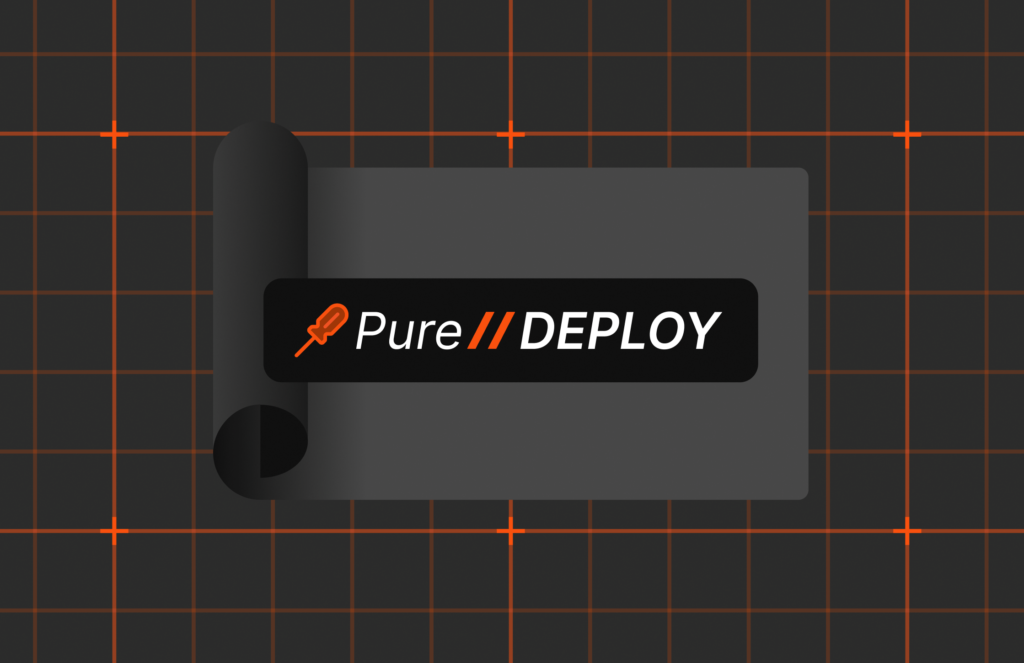Summary
Every second counts in cybersecurity. Without high-performance storage to deliver fast ingestion and processing speeds, even the best security tools—and the cyber threat hunting teams using them—will be limited.
Organizations rely on security logs to help detect, respond to, and recover from cyber threats. But these logs are only useful if they capture complete data and process it fast enough to detect threats in real time.
Yet most logs have data gaps, allowing threats to slip through the cracks. And the reason? Storage infrastructure.
Here’s how slow or outdated storage weakens your cyber resilience—and how you can fix it.
What Is Data Visibility?
In the general sense, data visibility is knowing where your data is. In the context of maintaining a secure IT environment, data visibility is security analytics. This means your ability to detect anomalies, identify threats, and stop them in real time before they escalate.
| Data Visibility The ability to detect anomalies, identify threats, and take action before they create serious damage |
You may be thinking: Isn’t this what security logs are for? Yes, but here’s where many fall short…
Security Logs: The Front Line of Defense—If They’re Fast Enough
Security logs are your first line of defense. They’re used to track system activity to detect anomalies, contain threats, and serve as crucial forensic evidence. But their effectiveness depends on the quality and completeness of your data and how fast you process it.
The challenge is that modern cyber threats move fast—with breakout times averaging just 48 minutes.
Breakout time is the time between which an attacker logs in as a regular user with “acquired” credentials and then elevates their privilege to admin level. Once an attacker is an admin, they become extremely difficult to catch. Making it worse, breakout times are getting shorter. One attack clocked in at 27 minutes. If security teams lack real-time logging, attackers can spread through your systems before anyone even notices.
Slow logs leave you reacting to damage rather than preventing it. And this is where your storage infrastructure comes in…
Storage: An Overlooked Bottleneck for Log Performance
Picture a massive warehouse stocked with high-value merchandise. The company has security in place—locked doors, cameras, and guards patrolling the area 24×7. But one night, a group of thieves finds a way in.
They use stolen employee credentials to enter the building and then slip into cleaning crew uniforms to blend in. Moving undetected, they disable alarms and unlock doors.x
The thieves have an advantage: Cameras record only every 30 minutes and guards don’t patrol frequently enough. By the time anyone notices something may be wrong, they’ve loaded a truck full of goods and driven away.
This illustrates how a lot of storage exists now.
If your ingestion (collection) and processing speeds are too slow, you don’t receive complete information in real time, which creates data gaps.
Then your threat hunting team may detect anomalies too late—like security guards getting an alert for suspicious movement too late, only to arrive after the shelves have been cleared.
75% of Organizations Have Blind Spots
A staggering 75% of IT leaders feel their organization has visibility gaps in their IT ecosystem, according to a 2024 Flexera survey. These blind spots create serious security risks, and the problem is growing as data environments become more complex.
Some of the top challenges to data visibility include:
- Overwhelming data volume: Security teams can’t keep up with exponential data growth.
- Fragmented systems and silos: Disconnected logs create blind spots where threats hide.
- Slow infrastructure delays detection: If logs take too long to process, security teams can’t react fast enough.
Sure, you can upgrade your security tools, but even the best tools are limited without high-performance storage.
Why Your Blind Spots May Get Worse
Cyberattacks are increasing in frequency and complexity, so you must process more data than ever. This demands more storage capacity and speed. When storage can’t keep up, you face a tough choice:
- Collect security logs from more sources, but process data more slowly.
- Process data quickly, but collect security logs from fewer sources.
Neither choice is ideal as they both create data gaps, which increases the organization’s vulnerability.
Remember that anomalies often start as small activities—an unusual login, unexpected system access, or a privilege escalation. If these warning signs aren’t detected immediately, attackers have more time to move through your systems and create greater damage.
But it doesn’t have to be that way.
Unlocking the Power of Real-time Anomaly Detection
Only scalable, high-performance storage enables true data visibility. Being able to view anomalies in real time enables your cyber threat team to detect breaches before they happen, which facilitates stronger cyber resilience.
Going back to the warehouse analogy, here’s what having full data visibility could look like:
- Cameras instantly flag an unfamiliar face at the entrance and immediately send images to security guards.
- If the thieves get in, cameras and sensors instantly detect unusual activity, pinpoint the exact location, and alert guards.
- Security guards intervene before the theft happens.
Dive deeper in this video, “How the Right Storage Can Improve SIEM Operations.”
How Pure Storage Is Designed to Deliver True Data Visibility
All your data lives on storage. Yet storage often gets overlooked until something goes wrong.
A major oversight is how many organizations use commodity solid-state drives (SSDs), which aren’t built for the demands of modern cybersecurity. Commodity SSDs lack the speed and bandwidth to ingest data from all sources and correlate it fast enough to provide full data visibility.
The Pure Storage architecture overcomes these limitations to provide true anomaly visibility.
Pure Storage® DirectFlash® Modules (DFMs) eliminate traditional storage bottlenecks by:
- Providing direct access to NAND storage, bypassing slow external controllers
- Ingesting and correlating security data at line speed, maximizing real-time insights
- Enabling full data visibility for security teams, so threats are caught in time
With the unmatched ingestion and processing speeds of Pure Storage, your cyber threat hunting teams aren’t playing catch up. They’re stopping threats before they happen.

Cyber Resilience, Pure and Simple
Fortify your data and guarantee uninterrupted business operations.
A Fast Foundation
Eliminate storage bottlenecks with the Pure Storage platform.






